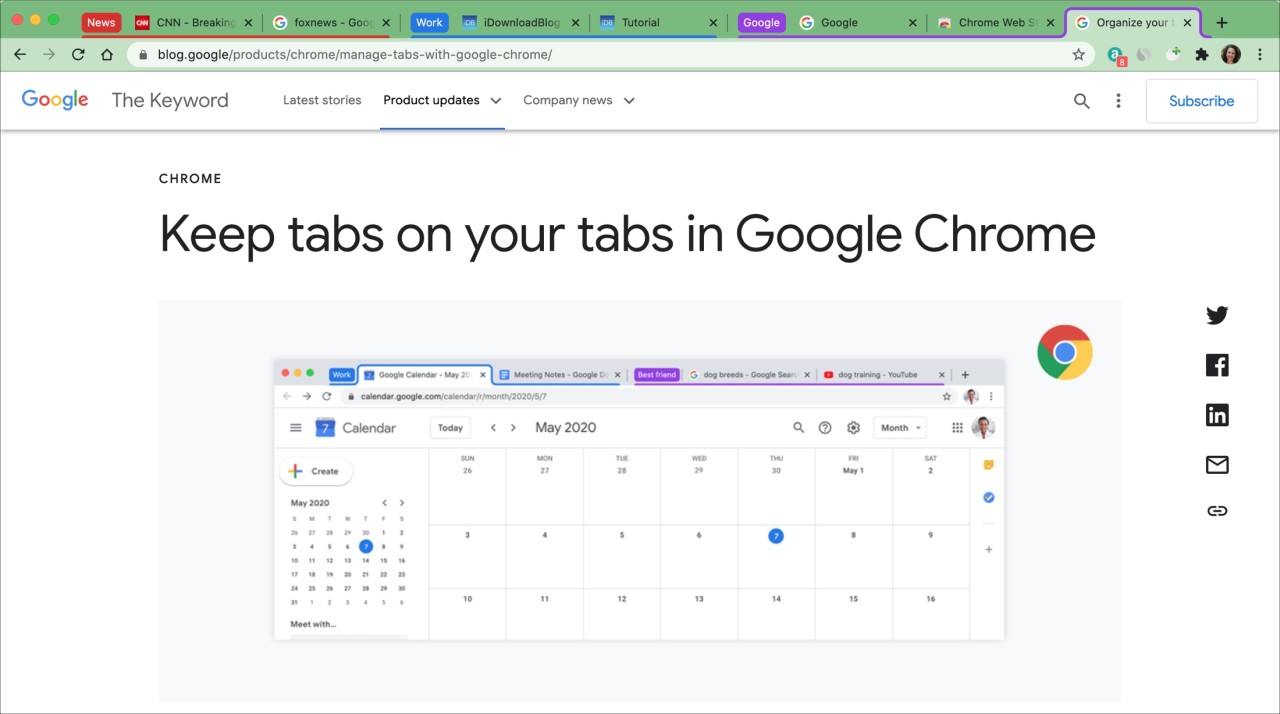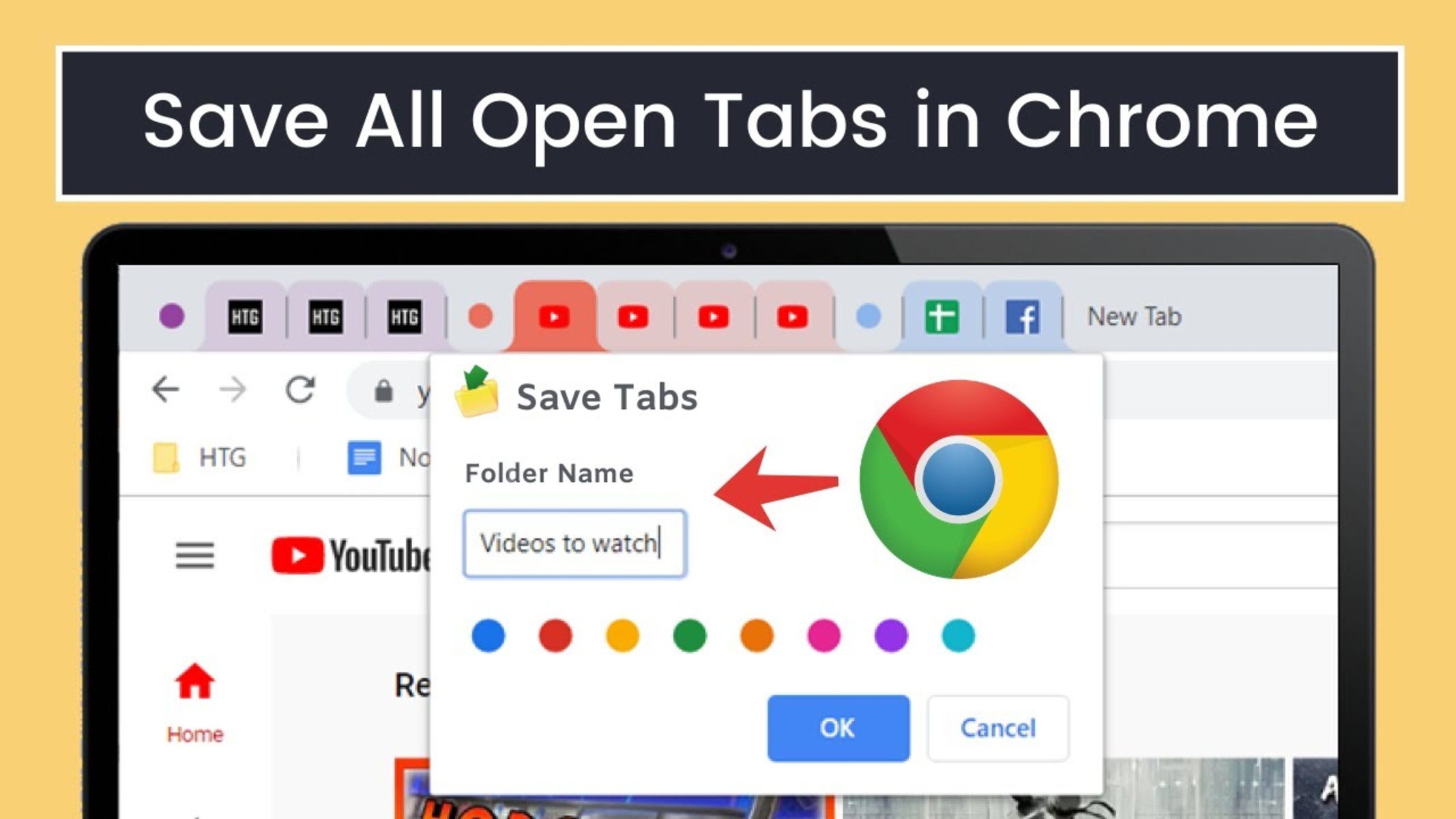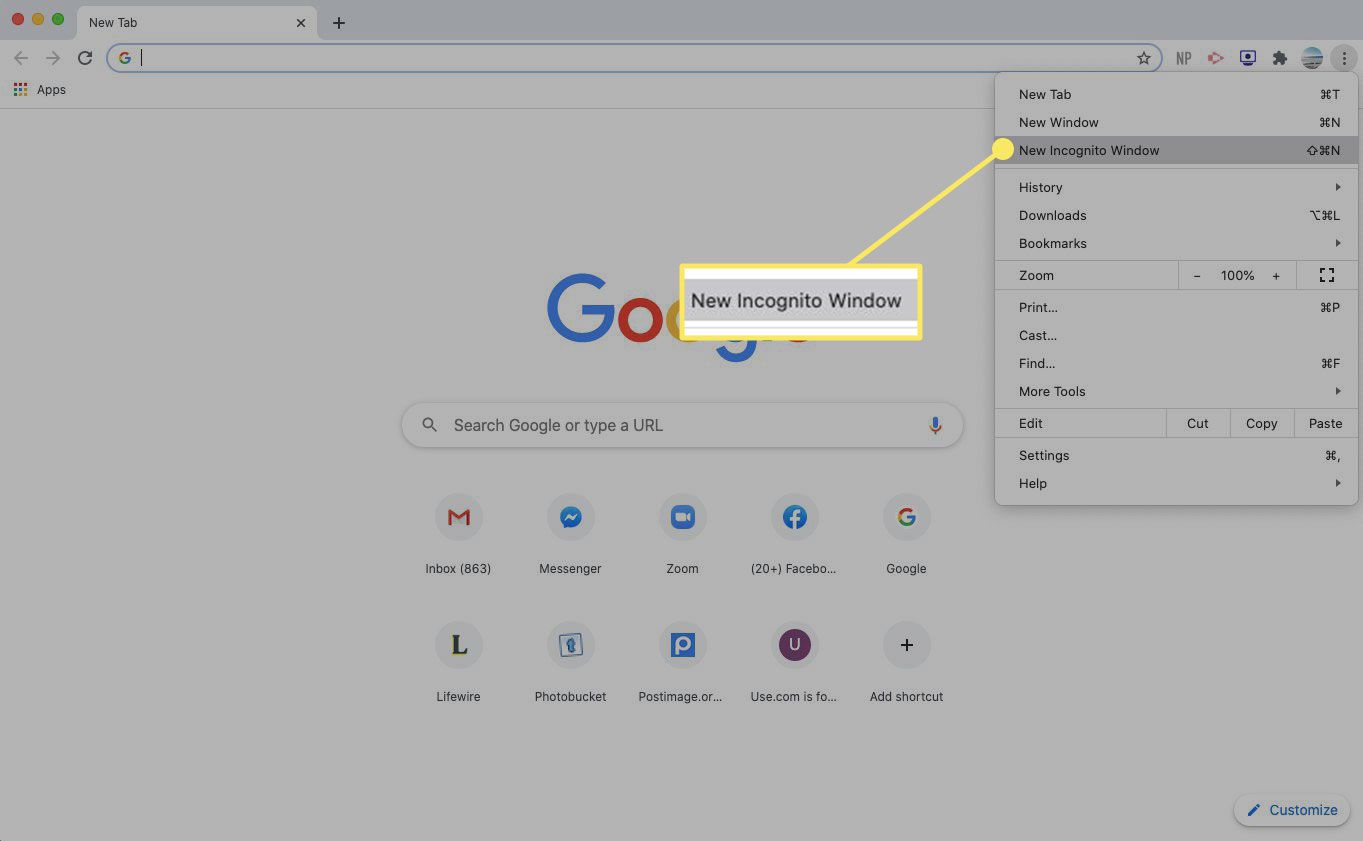Introduction
Navigating between tabs in a web browser is a fundamental aspect of the online experience. Whether you are conducting research, managing multiple projects, or simply enjoying leisurely browsing, the ability to seamlessly switch between tabs can significantly enhance your productivity and overall browsing experience. In this article, we will explore various methods to navigate between tabs in Google Chrome, one of the most popular web browsers globally.
As the digital landscape continues to evolve, the demand for efficient and intuitive browsing experiences has become increasingly paramount. With the proliferation of web-based applications, social media platforms, and multimedia content, users often find themselves juggling multiple tabs to access diverse content and services. Understanding how to navigate between tabs in Chrome can streamline your browsing workflow and empower you to harness the full potential of this versatile browser.
Whether you are a seasoned Chrome user or a newcomer to the platform, mastering the art of tab navigation can unlock a world of possibilities. From effortlessly switching between research articles and social media feeds to managing multiple email accounts and productivity tools, the ability to navigate between tabs with ease is a skill that can elevate your digital proficiency.
In the following sections, we will delve into the various methods for navigating between tabs in Chrome, catering to different user preferences and device capabilities. Whether you prefer using a mouse, keyboard shortcuts, or touchscreen gestures, there is a navigation method tailored to your unique browsing style. By understanding and implementing these techniques, you can optimize your tab management and elevate your browsing experience to new heights.
Join us as we embark on a journey through the intricacies of tab navigation in Chrome, uncovering the tips and tricks that will empower you to navigate the web with unparalleled efficiency and fluidity. Let's dive into the world of tab navigation and discover the myriad ways to seamlessly traverse the digital realm within the confines of Google Chrome.
Using the Mouse to Navigate Between Tabs
Navigating between tabs using the mouse is a straightforward and intuitive method that caters to users who prefer a visual and tactile approach to tab management. In Google Chrome, the tab bar serves as a central hub for organizing and accessing multiple tabs, providing users with a visual representation of their browsing sessions. By leveraging the capabilities of the mouse, users can seamlessly navigate between tabs with precision and ease.
Clicking on Tabs
The most fundamental way to navigate between tabs using the mouse is by clicking directly on the tab of interest. Each open tab is represented by a distinct visual element on the tab bar, allowing users to identify and select their desired tab with a simple click. By positioning the cursor over the tab of choice and clicking on it, users can swiftly switch between tabs, effortlessly transitioning from one web page to another.
Tab Scrolling
In scenarios where numerous tabs are open, and the tab bar becomes crowded, Chrome provides a convenient tab scrolling feature. Users can navigate through their open tabs by utilizing the scroll wheel on their mouse. By hovering the cursor over the tab bar and scrolling the mouse wheel, users can cycle through their tabs, effectively managing a large number of open web pages without the need for excessive clicking or manual tab rearrangement.
Tab Preview
For users who prefer a visual preview of their open tabs, Chrome offers a tab preview feature accessible through the mouse. By hovering the cursor over a specific tab for a brief moment, a visual preview of the tab's content is displayed, providing a snapshot of the web page without requiring the user to switch to the tab immediately. This feature enables users to quickly assess the content of each tab before making a selection, enhancing the efficiency and convenience of tab navigation.
Drag and Drop
In addition to traditional tab selection, Chrome allows users to rearrange their tabs using the mouse through a drag-and-drop mechanism. By clicking and holding a tab with the mouse cursor, users can drag the tab left or right within the tab bar, reordering their tabs according to their preferences. This functionality empowers users to customize the arrangement of their tabs, facilitating personalized tab management tailored to their browsing habits and workflow.
By harnessing the capabilities of the mouse, users can navigate between tabs in Chrome with precision and flexibility, leveraging visual cues and tactile interactions to seamlessly traverse their browsing sessions. Whether through traditional tab selection, tab scrolling, tab preview, or drag-and-drop functionality, the mouse serves as a versatile tool for efficient tab navigation, enhancing the overall browsing experience within Google Chrome.
Using Keyboard Shortcuts to Navigate Between Tabs
Keyboard shortcuts offer a swift and efficient method for navigating between tabs in Google Chrome, catering to users who prefer streamlined and expedited interactions with the browser interface. By memorizing and utilizing specific key combinations, users can seamlessly switch between tabs, enhancing their browsing workflow and productivity.
Tab Switching Shortcuts
Google Chrome provides a range of keyboard shortcuts specifically designed for tab navigation. One of the most fundamental shortcuts is Ctrl + Tab (or Cmd + Option + Right Arrow on Mac), which allows users to cycle forward through their open tabs. Conversely, Ctrl + Shift + Tab (or Cmd + Option + Left Arrow on Mac) enables users to cycle backward through their tabs. These intuitive shortcuts empower users to navigate their tab collection with ease, eliminating the need for manual mouse interactions and providing a seamless browsing experience.
Direct Tab Access
In addition to sequential tab switching, Chrome offers keyboard shortcuts for direct access to specific tabs. By combining the Ctrl (or Cmd on Mac) key with a numerical digit corresponding to the position of the desired tab, users can instantly jump to a specific tab within their browsing session. For example, pressing Ctrl + 3 directs the user to the third tab from the left, facilitating rapid tab navigation without the need to cycle through multiple tabs sequentially.
Tab Management Shortcuts
Beyond basic tab switching, Chrome's keyboard shortcuts encompass advanced tab management functionalities. For instance, pressing Ctrl + T opens a new tab, while Ctrl + W closes the current tab, streamlining the process of tab creation and closure. Furthermore, Ctrl + Shift + T serves as a valuable shortcut to reopen the most recently closed tab, providing users with a convenient method to restore accidentally closed tabs without disrupting their browsing flow.
Customization and Flexibility
Chrome's keyboard shortcuts for tab navigation can be further customized and extended through the browser's settings. Users have the flexibility to define their own keyboard shortcuts or modify existing ones to align with their preferences and browsing habits. This level of customization empowers users to tailor their tab navigation experience, optimizing their workflow and efficiency within the Chrome browser.
By leveraging keyboard shortcuts, users can navigate between tabs in Google Chrome with precision and speed, harnessing the power of key combinations to seamlessly traverse their browsing sessions. Whether through sequential tab switching, direct tab access, or advanced tab management functionalities, keyboard shortcuts offer a versatile and expedited approach to tab navigation, enhancing the overall browsing experience within Google Chrome.
Using Touchscreen Gestures to Navigate Between Tabs
In the era of touchscreen devices, the ability to navigate between tabs using intuitive gestures has become increasingly prevalent, catering to users who prefer tactile interactions and seamless navigation on their touch-enabled devices. Google Chrome, as a leading web browser, offers support for touchscreen gestures, empowering users to effortlessly manage their tab collection with fluid and natural movements.
Swipe Gestures
One of the primary touchscreen gestures for tab navigation in Chrome involves swiping horizontally across the screen. When multiple tabs are open, users can perform a leftward or rightward swipe on the touchscreen to switch between tabs. This intuitive gesture mimics the physical action of flipping through a stack of cards, allowing users to seamlessly transition between their open web pages with a simple and natural movement.
Pinch-to-Zoom Gesture
In addition to swipe gestures, Chrome leverages the pinch-to-zoom gesture for tab navigation on touchscreen devices. By placing two fingers on the screen and either pinching inward or spreading them apart, users can zoom in or out on the tab bar, revealing a visual overview of their open tabs. This gesture provides a convenient method for navigating through a large number of tabs, enabling users to visually assess and select their desired tab with ease.
Tab Preview and Selection
Chrome's support for touchscreen gestures extends to tab preview and selection, enhancing the browsing experience on touch-enabled devices. By tapping and holding a tab on the touchscreen, users can trigger a visual preview of the tab's content, allowing for quick assessment before making a selection. This gesture-based preview mechanism empowers users to efficiently manage their tabs, leveraging tactile interactions to streamline their browsing workflow.
Customization and Adaptability
Chrome's implementation of touchscreen gestures for tab navigation is designed to be adaptable and customizable, catering to the diverse preferences of users across different touchscreen devices. The browser's settings provide options for users to customize and fine-tune the behavior of touchscreen gestures, ensuring a tailored and intuitive tab navigation experience that aligns with their individual browsing habits and device capabilities.
By embracing touchscreen gestures, users can seamlessly navigate between tabs in Google Chrome, leveraging the natural interactions afforded by touch-enabled devices to enhance their browsing efficiency and fluidity. Whether through swipe gestures, pinch-to-zoom functionality, or tab preview and selection, Chrome's support for touchscreen gestures redefines tab navigation, offering a tactile and intuitive approach to managing tabs on modern touchscreen devices.

























